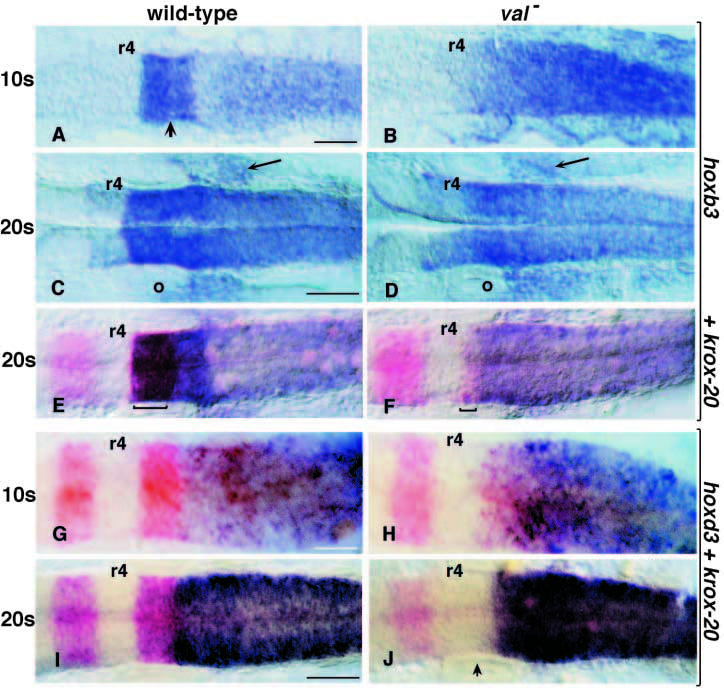Fig. 5 Expression of paralogue group 3 genes in wild-type (A,C,E,G,I) and val- (B,D,F,H,J) embryos, r4 is indicated on each specimen. (A-F) In situ hybridization with hoxb3. At the 10s stage hoxb3 has a high level expression domain in r5+r6 (A, arrow indicates r4/5 boundary), this domain is lacking in the val- embryos (B). By the 20s stage a low level expression domain is apparent in r4 (C,D), high level expression continues in wild-type embryos in r5+r6 (C) next to the otic vesicle (o), the comparable rX expression in val- embryos continues to be at a significantly lower level (D). Neural crest cells migrating posterior to the otic vesicle and expressing hoxb3 are indicated with arrows. E and F show double in situ hybridizations with krox-20 at the 20s stage, to confirm rhombomere locations (the posterior krox-20 expression domains are bracketed in each case). (G-J) In situ hybridization with hoxd3 and krox- 20. In wild-type embryos at 10s (G) and 20s (I) hoxd3 expression reaches the r5/6 boundary to abut the r5 krox- 20 expression domain. In val- embryos at 10s (H) hoxd3 expression is maintained in rX where, similar to hoxb3, it does not overlap with the small rX krox-20 expression domain. At 20s (J) expression is confined to the posterior half of rX, arrowhead indicates the approximate location of the r4/rX interface. Note variable levels of krox20 expression in rX, as discussed in text (compare J with F). Scale bar, 50 μm, where no bar shown, scale is equivalent to adjacent or above panel.
Image
Figure Caption
Figure Data
Acknowledgments
This image is the copyrighted work of the attributed author or publisher, and
ZFIN has permission only to display this image to its users.
Additional permissions should be obtained from the applicable author or publisher of the image.
Full text @ Development

